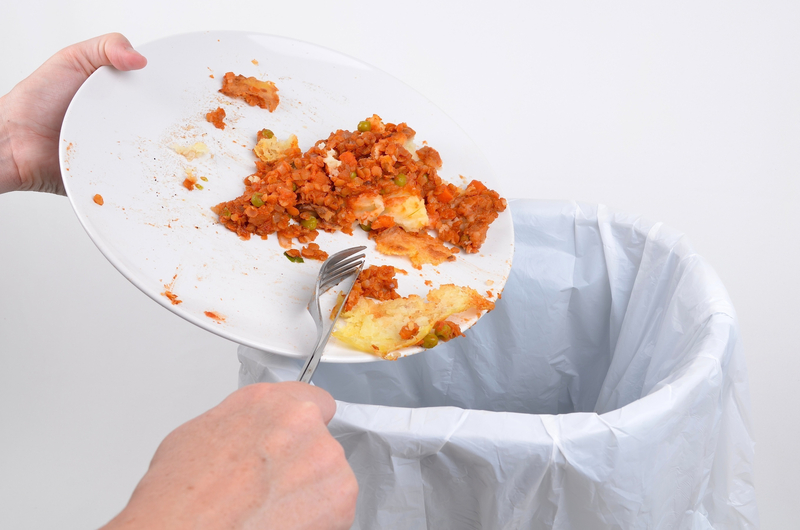Effortless Ways to Cut Down on E-Waste
Posted on 26/04/2025
In our rapidly advancing digital age, electronic waste, or e-waste, is becoming an increasingly pressing issue. Items like old phones, obsolete computers, and broken gadgets are discarded worldwide at an alarming rate. The need to manage this waste responsibly is imperative not just to mitigate environmental damage but to also recover valuable materials that would otherwise be lost. Fortunately, there are numerous effortless ways we can significantly cut down on e-waste. This article will explore a variety of strategies that individuals and organizations alike can implement to address e-waste effectively.
Understand the E-Waste Problem
Before diving into solutions, it's crucial to understand the scope and impact of e-waste. According to a report by the Global E-waste Statistics Partnership, the world produced 53.6 million metric tons of e-waste in 2019. This figure is expected to grow as technology becomes more ingrained in our daily lives. Notably, only 17.4% of this e-waste was officially documented as collected and recycled. The rest ended up in landfills or was informally processed, often in developing countries under hazardous conditions.

Extend the Life of Your Devices
One of the most straightforward ways to cut down on e-waste is by prolonging the life of your electronic devices. Regular maintenance and timely repairs can significantly extend the lifespan of your gadgets. For instance, replacing a phone battery or upgrading a computer's RAM can make these devices function as good as new. Before purchasing new electronics, consider whether upgrading or repairing your current devices would meet your needs.
Choose Quality Over Quantity
In the consumer market, cheaper isn't always better, particularly when it comes to electronics. High-quality devices often come with a higher upfront cost but tend to last longer and perform better over time. By choosing durable, high-quality products, you not only enjoy better performance but also contribute less to e-waste.
Resell or Donate Old Devices
If you have electronics that are still functional but no longer needed, consider reselling or donating them. Platforms like eBay, Craigslist, and Facebook Marketplace make it easy to sell used devices. Many organizations, such as schools and non-profits, also welcome donated electronics. This not only reduces e-waste but also provides valuable technology to those who might not have access otherwise.
Participate in E-Waste Recycling Programs
Many companies and local governments offer e-waste recycling programs where you can drop off old electronics for safe disposal. These programs ensure that hazardous materials like lead, mercury, and cadmium are properly managed and that valuable components are recovered. Before disposing of any electronics, check if your local community offers such services or if your device's manufacturer has a recycling program.
Buy Refurbished or Second-Hand Electronics
Another effective way to combat e-waste is to buy refurbished or second-hand electronics. Refurbished devices are pre-owned gadgets that have been professionally restored to excellent condition. They often come with warranties, making them a safer bet than generic used items. Platforms like Amazon Renewed, Best Buy's Geek Squad, and manufacturer websites offer a range of refurbished products at lower prices.
Use Cloud Services and Digital Solutions
With advancements in cloud technology, there's an ever-growing range of services that minimize the need for physical electronic devices. Utilize cloud storage solutions like Google Drive, Dropbox, and iCloud to reduce the necessity for external hard drives. Streaming services for music, movies, and even video games can further reduce the need for physical media.
Properly Dispose of Batteries
Batteries are a significant component of e-waste and need special attention. Improper disposal of batteries can lead to harmful chemicals leaching into the soil and water. Many stores, including Best Buy and Home Depot, offer recycling programs specifically for batteries. Some municipalities also have drop-off points for battery recycling.
Leverage Manufacturer Take-Back Programs
Many manufacturers have take-back programs that allow consumers to send back old devices for proper recycling. For instance, Apple's Trade In program allows you to trade in your old devices for credit toward new purchases or simply recycle them for free. By using these programs, you ensure that your old electronics are disposed of responsibly.

Advocate for Better Policies
Last but not least, advocacy plays a crucial role in cutting down on e-waste. Support and push for legislation that encourages responsible e-waste management. Policies that mandate proper disposal, recycling, and extended producer responsibility can go a long way in addressing the issue on a larger scale. Joining or supporting organizations dedicated to e-waste management can amplify your impact.
Conclusion
Addressing the e-waste problem requires a multifaceted approach. By understanding the issue, making thoughtful purchasing decisions, extending the life of our devices, and participating in recycling programs, we can all make a significant impact. Small individual efforts, when multiplied on a global scale, can lead to substantial reductions in e-waste. By taking these effortless steps, we can help ensure a more sustainable future for our planet.




